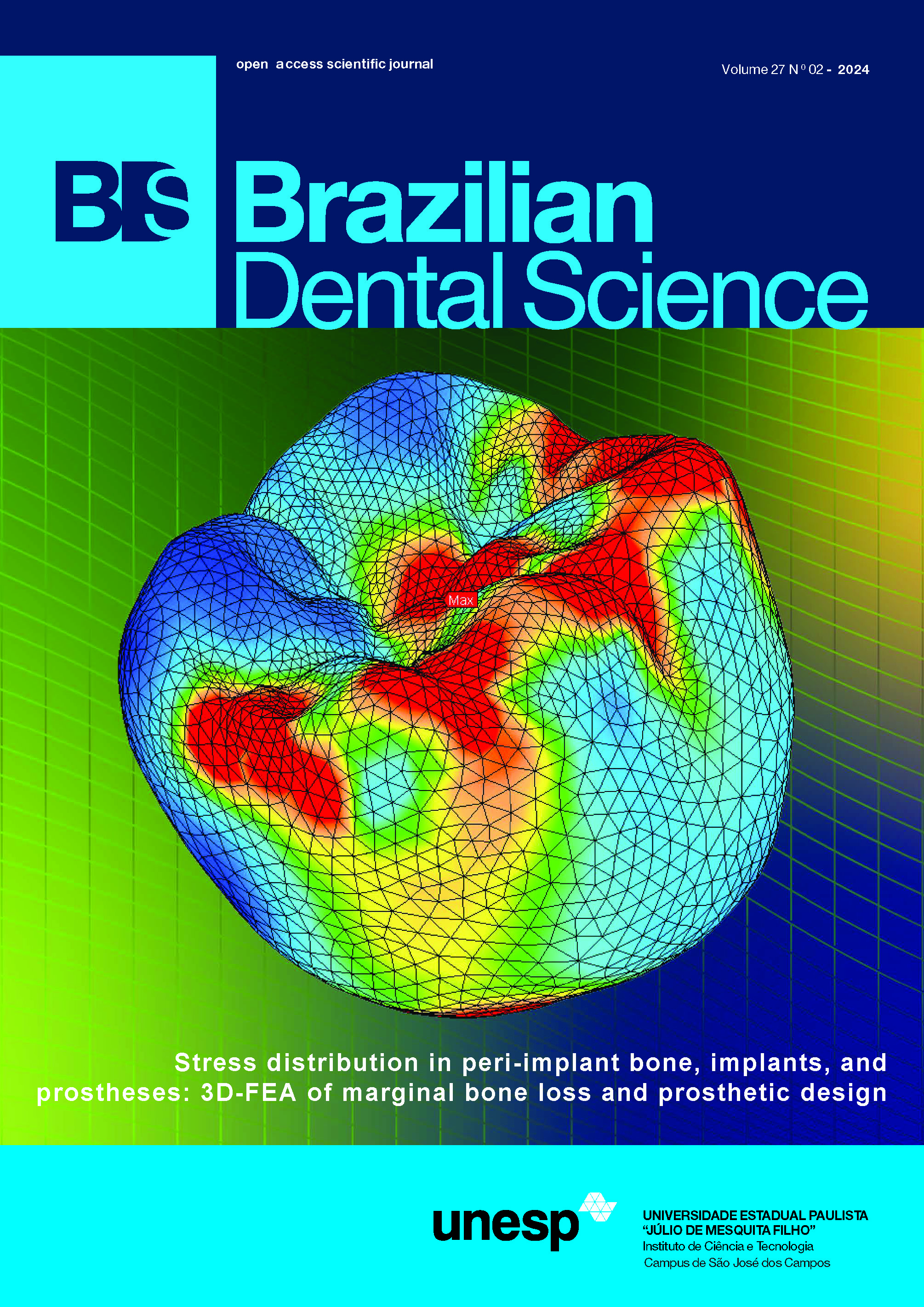Remineralizing potential of a fluoride varnish modified by bioactive nanoparticles
DOI:
https://doi.org/10.4322/bds.2024.e4246Abstract
Objective: Evaluate a fluoride varnish modified by nanostructures with the bioactive qualities of silica (SiO2) and niobium pentoxide (Nb2O5), testing its remineralizing potential by surface hardness (SH) and energydispersive X-ray spectroscopy (EDX). Material and Methods: Bovine enamel specimens (6×4×2mm) were prepared and submitted to a demineralizing/remineralizing process to produce a subsurface caries-like lesion, evaluated by transversal microradiography image (TMR) and subsequently distributed randomly into three groups: fluoride varnish (VZ); fluoride varnish + silica gelatin (VZ-SiO2) and fluoride varnish + niobium nanoparticles (VZ-Nb2O5). The specimens were subjected to a pH-cycling demineralizing/remineralizing process for 7 days at 37ºC. The %SH loss and %SH recovery (after the pH-cycling regimen) were calculated (n=10/group). The Ca/P weight ratio before and after the pH-cycling regimen was evaluated through SEM/EDX. A two-way ANOVA followed by Tukey’s test (p<0.05) was performed for hardness and EDX. Results: TMR image showed the formation of an artificial subsurface lesion, and a significant SH increase was observed in the VZ-Nb2O5 group (p<0.05). Regarding the %SHL and %SHR, the VZ-Nb2O5 and VZ-SiO2 were significantly different compared to the VZ group (p<0.001), but VZ-Nb2O5 presented higher values. The Ca/P ratio showed that blocks treated with VZ-SiO2 and VZ-Nb2O5 showed greater ion deposition, particularly in the presence of Nb. Conclusion: The bioactivity of niobium facilitated greater interaction between the enamel and the varnish, leading to a slow release of nanoparticles and a longer-lasting remineralizing effect.
KEYWORDS
Fluorides; Nanostructures; Niobium; Operative dentistry; Tooth remineralization.
Downloads
Published
How to Cite
Issue
Section
License
Brazilian Dental Science uses the Creative Commons (CC-BY 4.0) license, thus preserving the integrity of articles in an open access environment. The journal allows the author to retain publishing rights without restrictions.
=================




























